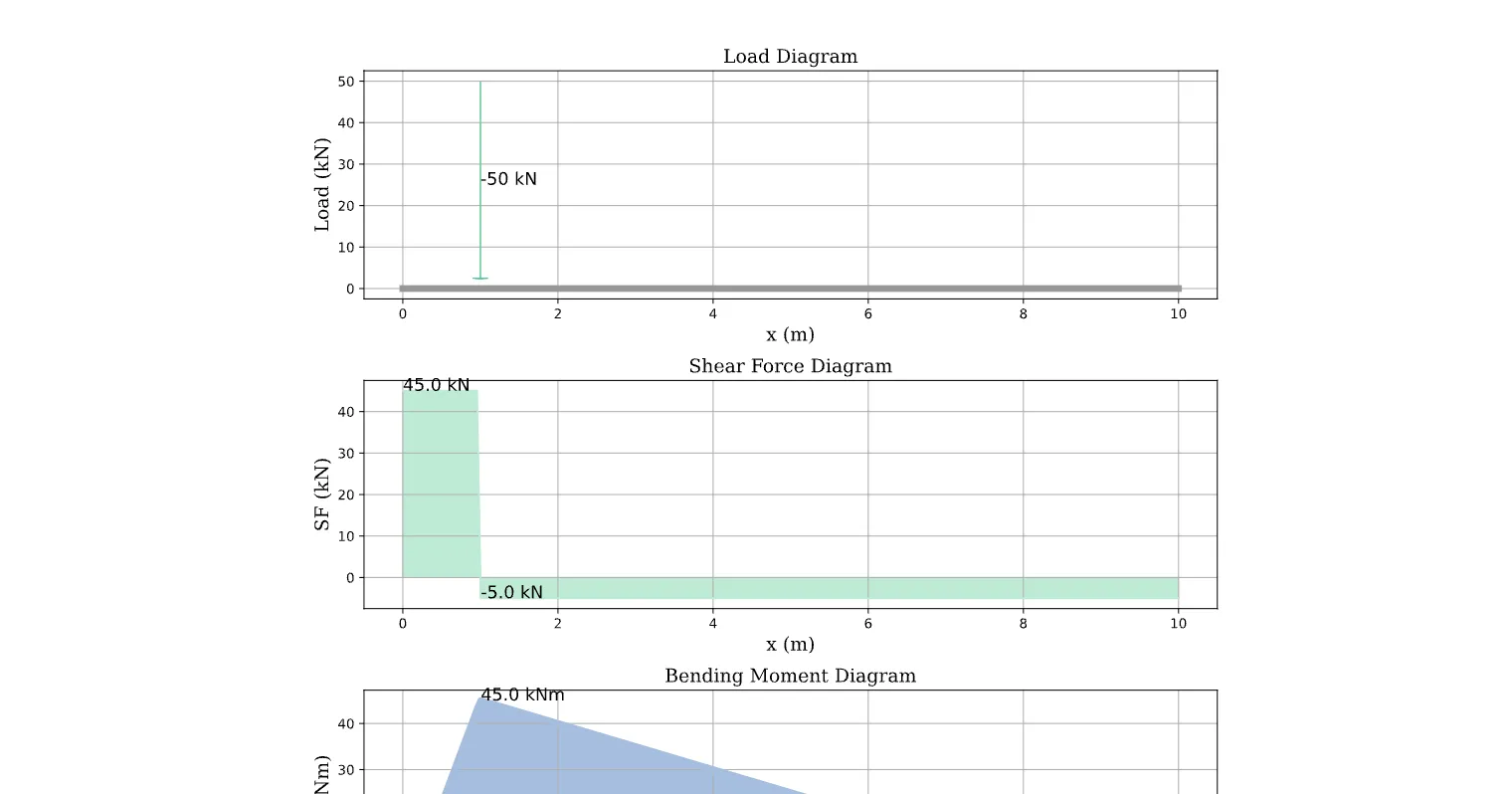Free Structural Analysis of Simply Supported Beam Design Tool. Step-by-step, engineering-grade tool with downloadable report.

This template is not available yet. You can sign up and create it yourself!
Or let us know if you'd like to be notified when it’s ready:
Get started with your design
The Structural Analysis of Simply Supported Beam with Point Load tool allows users to visualize key structural responses of a simply supported beam under a point load. The tool generates shear force, bending moment, and deflection diagrams, offering insights into how the beam behaves under the applied load at any point along its span.
This tool is for:
- Structural engineers who need to quickly analyze and visualize beam behavior for design and verification purposes.
- Civil engineering students studying fundamental principles of structural analysis and the effects of point loads on beams.
- Educators looking for clear, visual examples to teach shear force, bending moment, and deflection concepts in a classroom setting.
This parametric technical document is an invaluable resource for simplifying complex calculations, providing an accurate and intuitive visualization of beam behavior, and enhancing understanding of key structural concepts.
Engineering templates
Common calculators
Design guides
FAQs
What is the significance of the shear force diagram in beam analysis?
The shear force diagram shows how internal forces change along the length of the beam, which helps engineers understand how the load is distributed and where the beam is most likely to experience shear failure.
How does the location of the point load affect the beam?
The position of the point load greatly influences the internal forces (shear and moment) and the deflection of the beam. A load placed near the center will typically produce the largest bending moment, while loads near the supports generate larger shear forces.
Why is deflection important in beam analysis?
Deflection is critical to ensuring that a beam's deformation under load is within acceptable limits. Excessive deflection can lead to structural or aesthetic problems, so it must be carefully evaluated alongside shear and moment capacities.
Learn about the benefits of using CalcTree on engineering projects!



